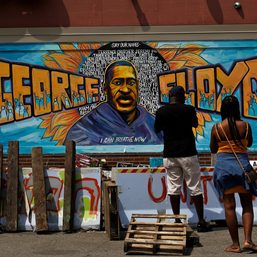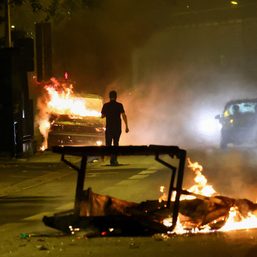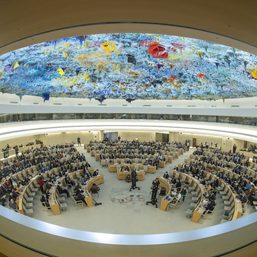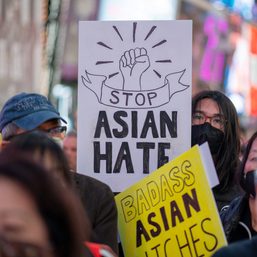SUMMARY
This is AI generated summarization, which may have errors. For context, always refer to the full article.
![[OPINION] A new low for Asians in America](https://www.rappler.com/tachyon/2021/04/shutterstock-mcpherson-square.jpeg)
Everywhere you look lately there’s been an alarming surge in anti-Asian violence in the US. Part of this grim catalogue includes: the murders in Atlanta; the 84-year-old man from Thailand, dead after being violently slammed to the ground in the Bay Area; elderly Asian women attacked in New York and San Francisco; a Filipino man whose face was slashed with a box-cutter in Brooklyn, and many others. More recently, a Filipino woman on her way to church on West 43rd Street in Manhattan was brutally beaten up as the doorman shut the door of the apartment building in front of where it happened — all of which left me feeling horrified and utterly bereft.
Lily Zheng makes a compelling observation that sets hate crimes within the larger context of the history of US racism: “One of the biggest mistakes we’ve made as a society is allowing ‘racism’ to be understood as an intention, rather than an outcome…. People and systems have participated in racist harm since the birth of [the US]. Was it a hate crime to expose 4 million Vietnamese citizens to Agent Orange? Was it a hate crime to forcibly relocate 120,000 Japanese-Americans to internment camps? Was it a hate crime to prohibit all Chinese immigration to the US via the Chinese Exclusion Act? Was it a hate crime to cover COVID-19 in news media with so much racial stereotyping that 3 years worth of declines in anti-Asian bias were reversed in weeks? No, and yet all of this is, and was, racism…. Racism is the water, not the shark. If we want to do better, we have to fix our entire culture and systems, not just our people.”
I couldn’t agree more. We all know that hate crimes against Asian-Americans have long been underreported because of language barriers, fear and distrust of the police, and a deep desire to assimilate. This year alone, the New York Police Department has received 33 reports of anti-Asian hate crimes, already surpassing the 28 reported last year.
Reckoning with recent anti-Asian attacks has been further complicated by the fact that the perpetrators include Blacks as well as whites, women as well as men. While the recent surge has also been attributed to Trump’s racist characterization of COVID-19 as a “China virus,” the fact remains that deep-seated animosity towards Asian-Americans as “unassimilable foreigners” have long existed. Added to this is the fact that, as the writer Hau Hsu has said, it is difficult to arrive at a “common vernacular” for Asian-American suffering. Asians in the US are too diffuse, too diverse, too segmented by class, religion, nationality, language and ethnicity to form a unified group. Hence, it makes it difficult to identify them as a consolidated constituency – until, that is, they become targeted for racist and sexist violence.
The diversity of Asian-Americans might help explain why the response to anti-Asian violence has not been as vigorous as we’ve seen in the attacks on Blacks. While the Black Lives Matter movement have seen broad-based support among Asians and other groups, the reverse does not seem to be true. But a closer look at the history and dynamics of Black support for Asians shows that there has been no shortage of mutual concerns. Black and Asian alliances span decades: from the Civil Rights movement (which planted the seeds for Asian-American empowerment) to Asians joining with the Black Power movement through the 1960s and ’70s and forming part of Jesse Jackson’s Rainbow Coalition in the 1980s; from the struggles over housing segregations, affirmative action and police brutality; and, of course, more recently, with Black Lives Matter. The point is that, while Blacks have figured in attacks on Asians, they should neither obscure nor override the deep history of Black-Asian alliances.
The bigger picture here, of course, is white supremacy, to which other races react, often with brutal consequences. After all, colonizers have been deploying this divide-and-rule strategy for centuries, toying arbitrarily with territorial boundaries and notions of “racial difference.” I vividly recall how, after 9/11 in New York, many Indian Sikhs were attacked because they were mistaken for the Taliban from Afghanistan (the stark difference in their respective “turbans” notwithstanding). More recently, in the context of COVID-19, the Asian community in the US and elsewhere has remained deeply divided, with many being highly critical of the Chinese government’s handling of the virus’ onset. But then again cultural nuance has never been white supremacy’s strongest suit.
On the other hand, one can hardly argue that all the misogyny and homo/trans-phobia in many parts of the postcolonial world can simply be laid at the feet of former colonial rulers. White supremacy tends to infect the very people it victimizes. For this reason, people of color can harbor the self-same racism that has been directed at them, which may explain why the recent attacks have been largely directed at vulnerable groups like women and elderly people.
What saddens me most is the relative silence and lack of outrage about these harrowing stories. Time and time again, Asian narratives have been rendered invisible. But Edward Said once decried the obscenity of comparing human suffering. After all, if we are outraged by slavery, apartheid and genocide all over the world, then what of the Rohingya and the Uighurs? If we routinely talk about the sexual slavery of women and girls in the 1990s war in Bosnia-Herzegovina, then why is there still a dearth of literature (except in South Korea) on the mainly Asian “comfort women” who serviced the Japanese Imperial Army during the Second World War? Do some human lives still have more market value and social capital than others? What is the point, in short, of fighting for racial justice if we’re not all in this together? – Rappler.com
Lila Ramos Shahani, the former Secretary-General of the Philippine National Commission for UNESCO, is now an independent writer living in the US.
Add a comment
How does this make you feel?





There are no comments yet. Add your comment to start the conversation.